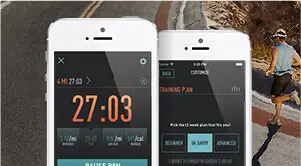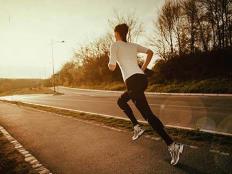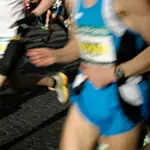How the ElliptiGO Compares to Running and Cycling
A study conducted at the University of California at San Diego revealed that the relative energy expenditure rates for participants riding the ElliptiGO were significantly higher than those for cycling at the same speed. At the two highest velocities—16 and 18.5 miles per hour—the energy cost of exercising on the ElliptiGO was similar to that of running at 7.5 and 8.6 mph, whereas at lower velocities, the energy cost of running at 6.0 and 6.7 mph was greater than exercising on the ElliptiGO. The heart rate responses and perceived exertion were markedly higher on the ElliptiGO than for cycling, but similar to those for running.
More: Increase Endurance With Non-Impact Cycling
Researchers also found that "running" on an ElliptiGO burns 33 percent more calories than riding a bike, and it delivers a cardiovascular workout comparable to running. This is what Olympic marathon silver medalist and 2009 New York City Marathon champion Meb Keflezighi found when he took his first spin on an ElliptiGO.
"The first time I rode the ElliptiGO was a 10-mile ride, and it was amazing how much more of a workout it was compared to riding a bike, which used to be my primary source of cross-training," says Keflezighi.
Keflezighi, an ElliptiGO Project athlete, has experienced more than his fair share of injuries over the course of his 16-year career. The 38-year-old is the slim minority—if not the only athlete—in American distance running who has managed to compete on a world-class level for over a decade. To quantify this feat, imagine: marathon training cycles that include 110- to 120-mile weeks, completing training runs at close to 8,000 feet, doing core workouts 5 to 6 times a week, completing 3 to 5 hours of cross-training each week, and working out twice a day nearly every day for years.
"For all of us marathoners, there's a consistent battle between training hard and getting to the starting line healthy," says Keflezighi. "I use the ElliptiGO to help me balance between my need to push my body to prepare for the marathon distance and the reality that my body has limitations."
More: 4 Ways to Run Faster After Age 40
Keflezighi trains on the ElliptiGO three times a week for his evening workouts, substituting an easy 4.5-mile recovery run for 17 to 20 miles on the ElliptiGO so he can get the physiological stimulus his training requires without the impact force of running. If he feels pain or is in recovery mode from an injury, Keflezighi substitutes a ride on the ElliptiGO instead of running to keep the momentum going.
- 2
- of
- 4
About the Author

Get ACTIVE on the Go


13.one Half Marathon
Get expert advice and guidance as you progress in your journey to becoming an avid runner.
Available for iOS







Discuss This Article